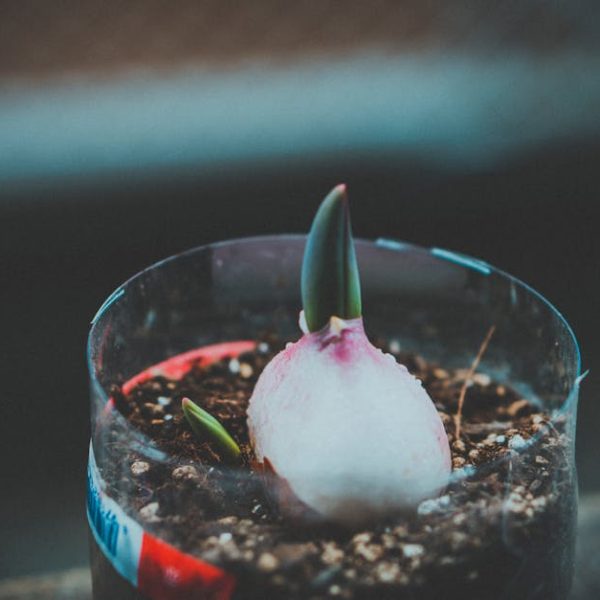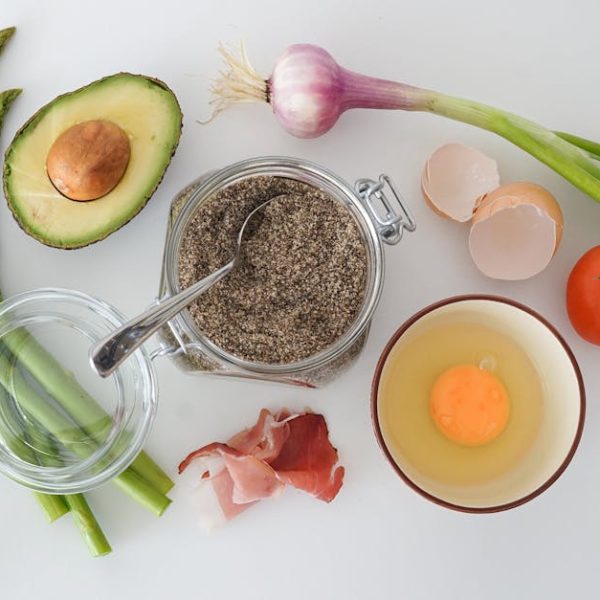Cabbage, with its crunchy crispness and delicious versatility, is a kitchen staple in various cuisines across the world. However, preserving its vibrancy and freshness can prove to be a task, requiring particular storage methods. Here, we provide valuable insights on effective cabbage preservation, ensuring you savor its value for longer periods.
Tips for Storing Cabbage in the Refrigerator
Your refrigerator is an ally in the quest to keep your cabbage fresh. The optimal temperature and a controlled environment help in prolonging its shelf-life. The secret to effective fridge storage lies in choosing a flexible container or bag and wrapping your cabbage in a layer of plastic wrap or housing it in an airtight container to ensure optimal moisture balance. It not only augments freshness but also prevents unwanted fridge odors seeping into the cabbage.
- Begin by inspecting the cabbage for any damaged or wilted outer leaves.
- Discard any spoilt leaves if present. Don’t wash the cabbage prior to storage as moisture can initiate decay.
- Wrap the cabbage in plastic wrap or store it in an airtight container before putting it in the refrigerator.
Bear in mind; refrigerated cabbage thrives in a temperature environment of 32–36oF. A word of caution, never wash cabbage before storage. Moisture can speed up decay and shorten its lifespan. Another helpful tip is replacing the wrap or container every few days to maintain freshness.
How to Keep Your Cabbage Fresh Using a Root Cellar or Cool Dark Place
Root cellars or similar cool, dark places can serve as perfect havens for cabbage storage, offering a traditional and organic form of preservation. Here, you can retain the freshness of cabbage by leveraging preferred temperature and humidity conditions. Factors such as a dark environment, high humidity, and cool temperatures work to effectively extend the lifespan of cabbage.
Despite the allure of root cellars, they come with some challenges. Maintaining optimal temperature and humidity could prove cumbersome. But worry not, a simple work-around like wrapping each cabbage head in a newspaper and steering clear of storing it with fruits helps to prevent premature rot.
Making Use of Vinegar Solution to Extend Cabbage’s Freshness
A vinegar solution is an inexpensive and accessible method to enhance the shelf life of your cabbage. The solution’s natural acidic properties can significantly hinder the growth of bacteria and molds that typically cause spoilage.
- First, start by thoroughly washing the cabbage under tap water.
- Prepare your vinegar solution by mixing a tablespoon of vinegar with a cup of water.
- Submerge your cabbage in the solution for a few minutes, and then rinse it again under cold tap water.
- Finally, pat it dry with a paper towel before storage.
However, you must bear in mind the impact on the cabbage’s taste and texture when using this method. It may make the cabbage a bit tangy, which could be a plus or a disadvantage based on your personal preference. You’ll find that the method is quite cost-effective compared to commercial preservatives and relatively efficient, though it does require regular reapplications for longer storage periods.
Preserving Cabbage by Freezing
Freezing is a tried-and-true method of preserving various food items, and cabbage is no exception. However, the catch here is to blanch the cabbage before freezing. Blanching, a process of briefly immersing vegetables in boiling water, helps eliminate enzymes that may lead to decay in the freezer. Let’s delve into the crucial steps involved in blanching and freezing cabbage:
- Begin by separating the cabbage leaves, then wash them thoroughly.
- Drop the leaves in boiling water, allowing them to blanch for about 1.5 to 2 minutes.
- Proceed to drain them, then plunge them into ice water to stop the cooking process.
- Finally, pat dry, package properly in freezer-safe bags, and store them in the freezer.
To prevent freezer burns and maintain the best quality, pack the blanched cabbage in moisture-vapor resistant bags designed for freezing. It’s also best to rid as much air from the bags as possible before sealing them.
Technique of Pickling to Keep Your Cabbage Fresh
An even more flavourful method of cabbage preservation is pickling. By immersing your cabbage in a solution generally made of vinegar, water, and some salt, you can extend its storage life while also adding a unique tang to its taste.
- Clean your cabbage and cut it into suitably sized pieces.
- Prepare the pickling solution following your preferred recipe. Typical ingredients include vinegar, water, salt, and sometimes sugar.
- Pack the cabbage pieces into a clean jar, then pour in the pickling solution until the cabbage is completely submerged.
- Seal the jar tightly and store in a cool, dark place.
Remember, the objective is to strike a balance between the vinegar and other ingredients to avoid overpowering the cabbage flavour. Pickled cabbage also pairs well with various dishes, including sandwiches and gravies.
Although pickling can significantly alter the cabbage’s flavor, some individuals might find this appealing, given its addition to culinary diversity. Comparably, it might seem more complex than simply refrigerating but compensates with increased storage lifespan.
Storing Partial Heads of Cabbage
Storing partial heads of cabbage is a common scenario, particularly for smaller families or individual consumers. However, you can still maintain the freshness and nutrient content of part cabbages with the right methods.
- Start by patting the cut surface dry if it’s moist.
- Leave the stem intact to guard against premature spoilage.
- Wrap the partial head securely with plastic wrap
- And finally, store it in the crisper drawer of your fridge for up to one week.
Remember not to wash the cabbage before storage as this encourages moisture, leading to faster decay.
Preservation of Cabbage Through Dehydrating or Drying
Preserving cabbage through dehydration is a viable option, serving you with the convenience of readily available cabbage for soups or other recipes. This process involves removing all moisture from the cabbage leaves, inhibiting bacterial growth and spoilage.
- Wash and dry the cabbage leaves.
- Use a dehydrator at the recommended temperature to slowly remove the moisture.
- Once completely dry, store the dehydrated cabbage in an airtight container in a cool, dry location.
The primary advantage of dehydrating cabbage is the reduction in storage space it requires. However, the dehydration process can slightly alter the cabbage’s taste and texture. Furthermore, you will need to rehydrate the cabbage before use, requiring a bit of forethought.
By implementing these practical tips for storing cabbage, you can significantly prolong its shelf life, reduce food waste, and enjoy it at its best. Just remember, the best preservation method for you will depend on how long you plan to store the cabbage and how you prefer to use it in your kitchen.
Key Takeaway:
- Storing cabbage in a suitable container/bag in the refrigerator can effectively prolong its freshness if maintained at an optimal temperature.
- Traditional methods like storing cabbages in a root cellar or a cool, dark place can improve longevity.
- A vinegar solution can help extend the freshness and shelf life of cabbage.
- The process of freezing, specifically blanching before freezing, is successful in preserving cabbage.
- Pickling cabbage can enhance its freshness while adding a unique taste.
- It’s possible to maintain the freshness and nutrient content of partial heads of cabbage with the correct storage methods.
- Dehydration is a viable method for preserving cabbage, especially for long-term storage.
In the hustle and bustle of everyday life, we often miss out on consuming our vegetables while they are still fresh. By implementing these practical tips on storing cabbage, you can ensure that you savor this versatile vegetable at its best. So, dig in, relish the crunch, and get creative with cabbage while cutting down on food waste!
FAQs
Q: Can these methods be used for all varieties of cabbages?
A: Yes. These storage methods are effective for all types of cabbages. However, there might be slight variations in storage times depending on the cabbage variety.
Q: Can I freeze cabbage without blanching?
A: While it’s possible to freeze cabbage without blanching, the process of blanching helps to maintain the texture, color, and nutrient content of the cabbage, so it’s highly recommended.
Q: Would pickled cabbage taste different than fresh cabbage?
A: Yes. Pickling changes the flavor of cabbage, adding a tangy taste. However, many people enjoy this distinctive flavor in many dishes.
Q: Can the storage duration vary for different methods?
A: Absolutely. The storage duration can vary greatly depending on the storage method. For instance, dehydrated or pickled cabbage can last much longer than refrigerated cabbage.
Q: Will the vinegar solution affect the taste of my cabbage?
A: Yes, using a vinegar solution might slightly alter the flavor of your cabbage, making it a bit tangy. However, this method is great if you like your veggies with a hint of tartness.
We hope your queries about keeping your cabbage fresh are answered! Feel free to share this article with others who might benefit from it. Don’t hesitate to explore more posts on our website to uncover practical tips on food preservation and other related topics.






